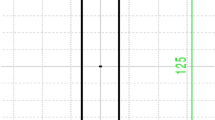Abstract
This research paper presents a novel approach to predicting the surface roughness of polylactic acid (PLA) specimens manufactured using the additive manufacturing process known as fused deposition modeling (FDM). The study introduces a unique coupling of genetic algorithm (GA) with four prominent machine learning algorithms, namely decision tree (DT), random forest (RF), artificial neural network (ANN), and gradient boosting regressor (GBR). The goal of this coupling is to enhance the accuracy and efficiency of surface roughness prediction, which is a critical aspect of FDM-based manufacturing. The proposed hybrid methodology explores the synergistic effect of GA and machine learning algorithms by optimizing the algorithmic parameters and feature selection. A comprehensive dataset was collected from the PLA specimens, and various performance metrics were employed to evaluate the effectiveness of the coupled algorithms. The results indicate that the GA–DT model outperforms the other coupled models, achieving an impressive R2 value of 0.9378. This high R2 value demonstrates the robustness of the GA–DT model in predicting surface roughness and highlights its potential applicability in the additive manufacturing domain.









Similar content being viewed by others
References
X. Zhang and F. Liou, Introduction to Additive Manufacturing, Additive Manufacturing. Elsevier, 2021, p 1–31
D. Bourell and T. Wohlers, Introduction to Additive Manufacturing, Addit. Manuf., 2020, 2020, p 24.
S. Ford, L. Mortara, and T. Minshall, The Emergence of Additive Manufacturing: Introduction to the Special Issue (2016)
T.H.J. Vaneker, The Role of Design for Additive Manufacturing in the Successful Economical Introduction of AM, Procedia CIRP, 2017, 60, p 181–186.
C. Greer, A. Nycz, M. Noakes, B. Richardson, B. Post, T. Kurfess, and L. Love, Introduction to the Design Rules for Metal Big Area Additive Manufacturing, Addit. Manuf., 2019, 27, p 159–166.
A. Haleem and M. Javaid, Additive Manufacturing Applications in Industry 4.0: A Review, J. Ind. Integr. Manag., 2019, 4(04), p 1930001.
S.K. Adapa, Prospects of Natural Fiber-Reinforced Polymer Composites for Additive Manufacturing Applications: A Review, JOM, 2023, 2023, p 1–21.
A. Nazir, O. Gokcekaya, K.M.M. Billah, O. Ertugrul, J. Jiang, J. Sun, and S. Hussain, Multi-material Additive Manufacturing: A Systematic Review of Design, Properties, Applications, Challenges, and 3D Printing of Materials and Cellular Metamaterials, Mater. Des., 2023, 2023, p 111661.
R. Agrawal, Sustainable Design Guidelines for Additive Manufacturing Applications. Rapid Prototyp. J. (2022)
P. Kumar and N.K. Jain, Surface Roughness Prediction in Micro-plasma Transferred Arc Metal Additive Manufacturing Process using K-Nearest Neighbors Algorithm, Int. J. Adv. Manuf. Technol., 2022, 119(5–6), p 2985–2997.
F. Lavecchia, M.G. Guerra, and L.M. Galantucci, Chemical Vapor Treatment to Improve Surface Finish of 3D Printed Polylactic Acid (PLA) Parts Realized by Fused Filament Fabrication, Prog. Addit. Manuf., 2022, 2022, p 1–11.
W. Macek, R.F. Martins, R. Branco, Z. Marciniak, M. Szala, and S. Wroński, Fatigue Fracture Morphology of AISI H13 Steel Obtained by Additive Manufacturing, Int. J. Fract., 2022, 235(1), p 79–98.
J.C. Pereira, F. Zubiri, M.J. Garmendia, M. Tena, H. Gonzalez, and L.N. López de Lacalle, Study of Laser Metal Deposition Additive Manufacturing, CNC Milling, and NDT Ultrasonic Inspection of IN718 Alloy Preforms, Int. J. Adv. Manuf. Technol., 2022, 120(3–4), p 2385–2406.
H. Fayazfar, J. Sharifi, M.K. Keshavarz, and M. Ansari, An Overview of Surface Roughness Enhancement of Additively Manufactured Metal Parts: A Path Towards Removing the Post-print Bottleneck for Complex Geometries, Int. J. Adv. Manuf. Technol., 2023, 2023, p 1–53.
B. Whip, L. Sheridan, and J. Gockel, The Effect of Primary Processing Parameters on Surface Roughness in Laser Powder Bed Additive Manufacturing, Int. J. Adv. Manuf. Technol., 2019, 103, p 4411–4422.
U.M. Dilberoglu, B. Gharehpapagh, U. Yaman, and M. Dolen, Current Trends and Research Opportunities in Hybrid Additive Manufacturing, Int. J. Adv. Manuf. Technol., 2021, 113, p 623–648.
P. Tyagi, T. Goulet, C. Riso, and F. Garcia-Moreno, Reducing Surface Roughness by Chemical Polishing of Additively Manufactured 3D Printed 316 Stainless Steel Components, Int. J. Adv. Manuf. Technol., 2019, 100, p 2895–2900.
A.S. Shastri, A. Nargundkar, A.J. Kulkarni, and K.K. Sharma, Multi-cohort Intelligence Algorithm for Solving Advanced Manufacturing Process Problems, Neural Comput. Appl., 2020, 32, p 15055–15075.
R. Mamedipaka and S. Thapliyal, Data-Driven Model for Predicting Tensile Properties of Wire Arc Additive Manufactured 316L Steels and Its Validation, J. Mater. Eng. Perform., 2023 https://doi.org/10.1007/s11665-023-08071-5
N. Ranjan, R. Kumar, R. Kumar et al., Investigation of Fused Filament Fabrication-Based Manufacturing of ABS-Al Composite Structures: Prediction by Machine Learning and Optimization, J. Mater. Eng. Perform., 2022 https://doi.org/10.1007/s11665-022-07431-x
P. Charalampous, N. Kladovasilakis, I. Kostavelis et al., Machine Learning-Based Mechanical Behavior Optimization of 3D Print Constructs Manufactured Via the FFF Process, J. Mater. Eng. Perform., 2022, 31, p 4697–4706. https://doi.org/10.1007/s11665-021-06535-0
K.L. Raju, S. Thapliyal, S. Sigatapu et al., Process Parameter Dependent Machine Learning Model for Densification Prediction of Selective Laser Melted Al-50Si Alloy and Its Validation, J. Mater. Eng. Perform., 2022, 31, p 8451–8458. https://doi.org/10.1007/s11665-022-06831-3
Author information
Authors and Affiliations
Corresponding author
Additional information
Publisher's Note
Springer Nature remains neutral with regard to jurisdictional claims in published maps and institutional affiliations.
Rights and permissions
Springer Nature or its licensor (e.g. a society or other partner) holds exclusive rights to this article under a publishing agreement with the author(s) or other rightsholder(s); author self-archiving of the accepted manuscript version of this article is solely governed by the terms of such publishing agreement and applicable law.
About this article
Cite this article
Mishra, A., Jatti, V.S. Novel Coupled Genetic Algorithm–Machine Learning Approach for Predicting Surface Roughness in Fused Deposition Modeling of Polylactic Acid Specimens. J. of Materi Eng and Perform (2023). https://doi.org/10.1007/s11665-023-08379-2
Received:
Revised:
Accepted:
Published:
DOI: https://doi.org/10.1007/s11665-023-08379-2




